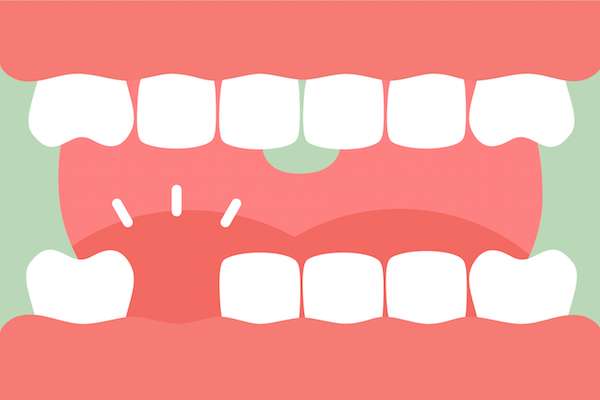Tooth extractions are some of the most common procedures that a performs. In fact, the American Dental Association includes extractions on its list of most frequently reported dental procedures. Because many patients undergo this treatment, it is important to understand when it is needed. Because patients should play a key role in their own dental health, the dentist and patient should always have a clear discussion about available options before choosing any treatment. In this way, the patient can feel confident about seeking necessary care.
3 times a family dentist recommends extracting a tooth
A family dentist typically recommends pulling a tooth when it is deemed nonrestorable, causing obvious infection, or causing an alignment problem.
1. Severe decay
When a cavity gets so large that it can no longer be restored, an extraction is the only option. In some cases, the tooth may be badly broken, and often, only the root tips are left. A family dentist recommends removing teeth in this condition because they are simply sources for infection to take hold. There are a number of restorative options available for missing teeth, and the patient can discuss these with the dentist before extraction. A severely decayed tooth is usually unsightly, so patients are often eager to have it removed and replaced.
2. Infection
Although dental infections are somewhat common, these can be quite dangerous if left untreated. If a family dentist detects a badly infected tooth, they may recommend an extraction. Dental infections are often detected by an X-ray. The patient usually presents with a toothache, but sometimes, the infection causes no symptoms at all. The infection can drain into the mouth, and many patients report a foul taste. An infection may arise from a decayed tooth, or it can happen after some type of trauma to the area. Antibiotics may be prescribed before extraction to reduce the amount of infection, but this is left to the dentist's discretion.
3. Crowding
Patients who are interested in orthodontics may need some extractions if the teeth are too crowded. The first premolars are the most common teeth to be removed for orthodontic treatment. These extractions are sometimes required for both traditional braces or clear aligner therapy. Patients should discuss the benefits of extractions for straighter teeth but should also know what the results will be like if certain teeth are not extracted. In some cases, adolescents may have retained baby teeth. These must be removed before or during orthodontic therapy to allow the permanent teeth to erupt correctly.
Conclusion
Every patient is unique, and a family dentist may recommend extractions for many reasons. The important thing is that patients understand why pulling a tooth is necessary and what care will be needed after the procedure. Patients concerned about oral health should visit a dentist for a comprehensive treatment plan. Dedication to good oral health is an important step in overall health.
or call Dental 32 at 602-466-9906 for an appointment in our Phoenix office.
Related Posts
A visit to the family dentist is recommended every six months. For patients with proper oral hygiene, the treatment provided during these visits should be primarily preventative. However, even those who take good care of their teeth occasionally need restorative treatments due to accidents or natural wear and tear over time.Most patients in need of…
For many people, a family dentist is the right choice for routine dental care. While this type of practice is usually equipped to handle the specific needs of pediatric patients, it is still able to provide thorough care for adults as well. Family dentists typically offer a wide variety of services in one location and…
Dental sealants are among the services a family dentist provides to help prevent tooth decay. Dentists perform the application on the back teeth, or molars, used primarily for chewing. These teeth have tiny crevices and uneven places where the bacteria that can cause cavities are often found. According to the American Dental Association, sealants can…
